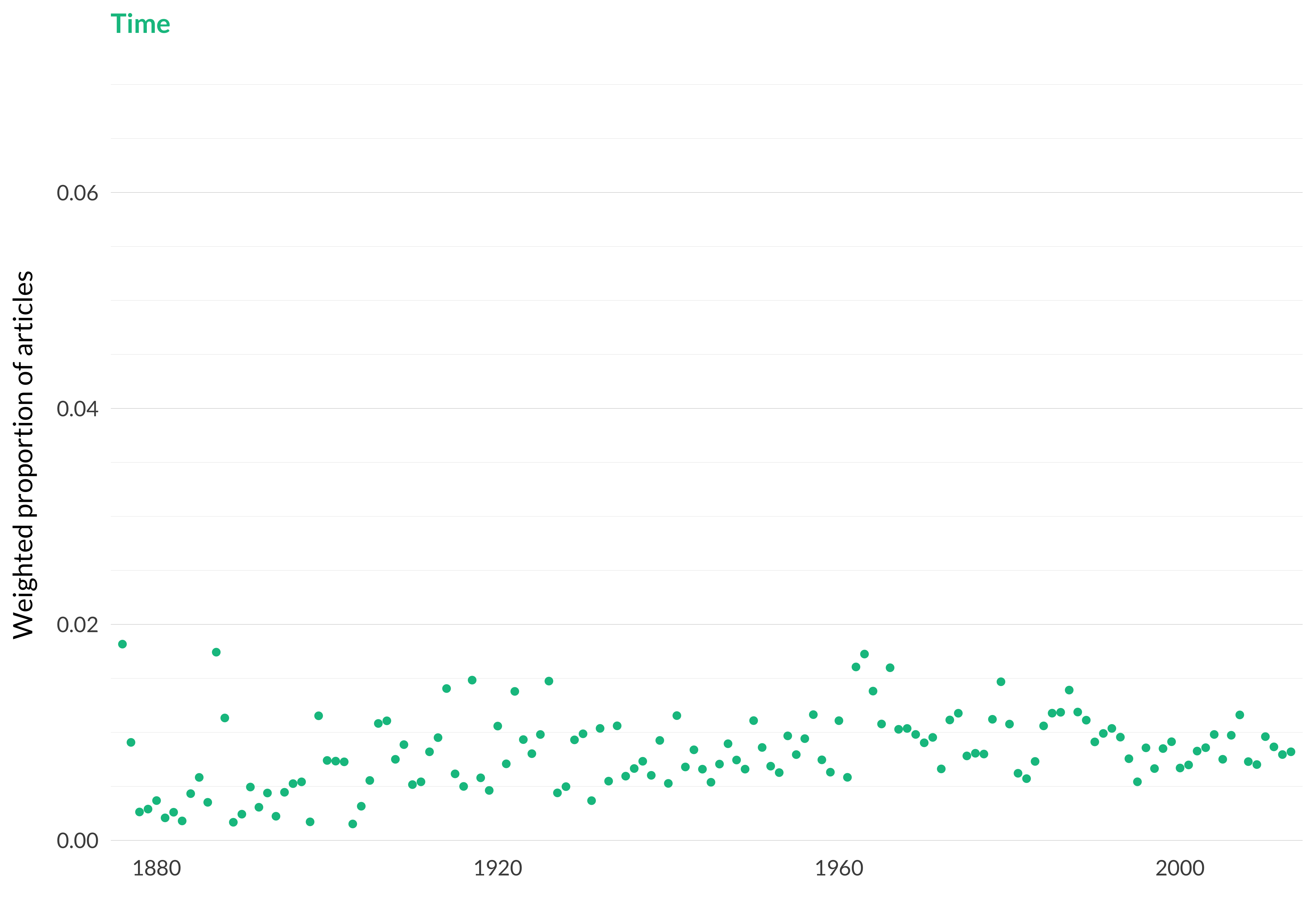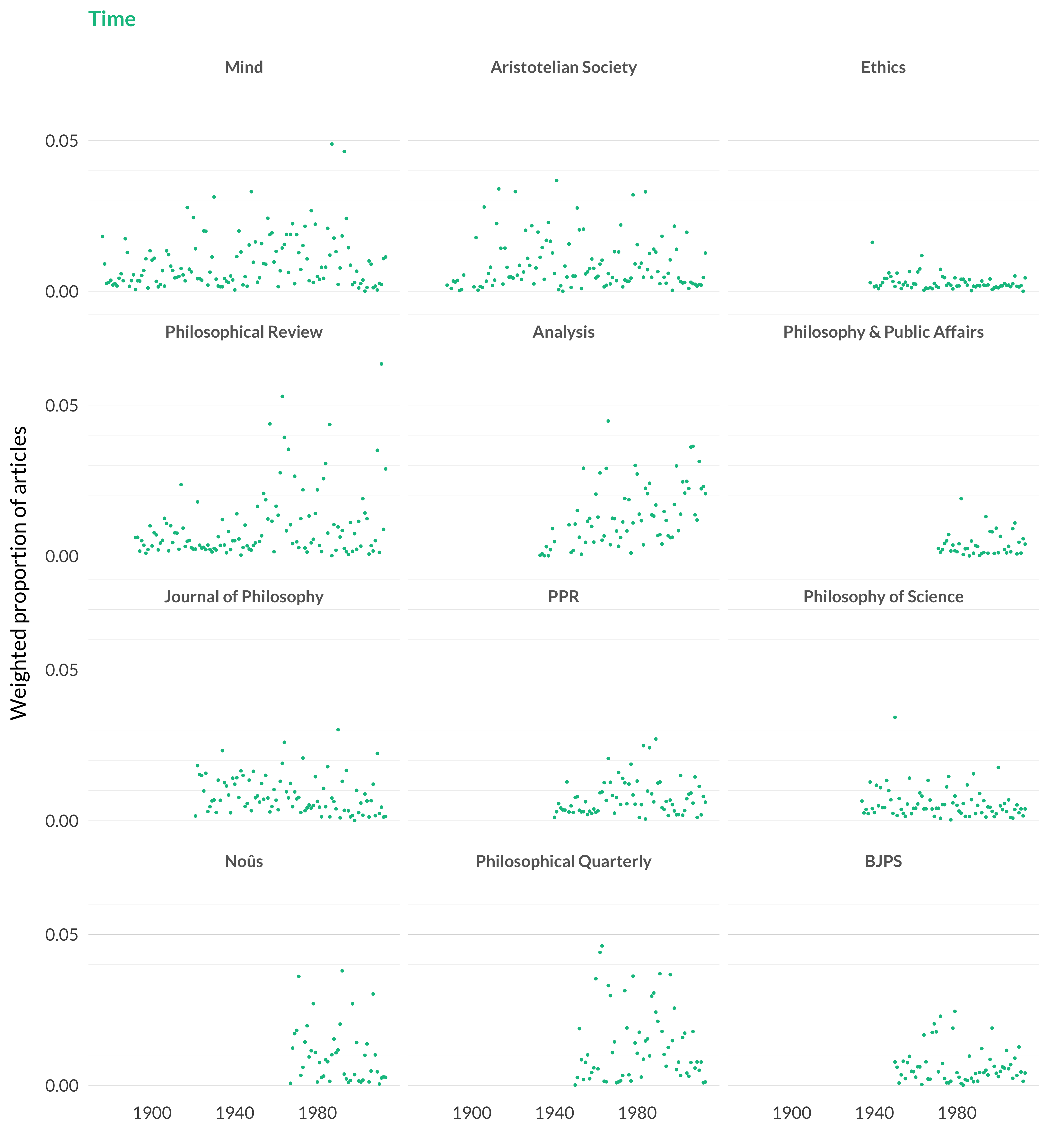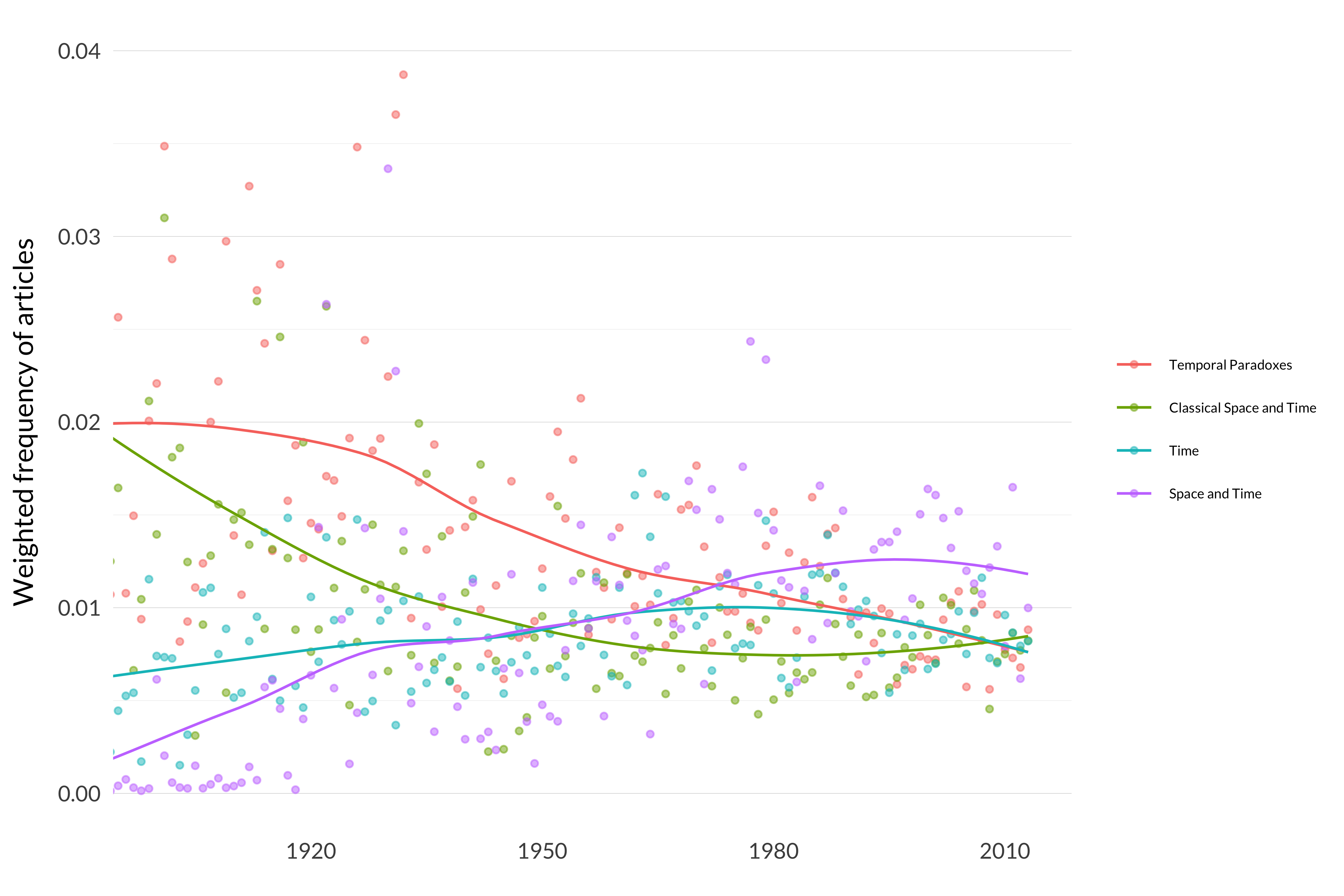2.39 Time
Category: Metaphysics
Keywords: tensed, remembering, future, past, tense, mctaggart, remember, memory, ago, memories, tomorrow, backward, sea, mellor, becoming
Number of Articles: 300
Percentage of Total: 0.9%
Rank: 51st
Weighted Number of Articles: 291
Percentage of Total: 0.9%
Rank: 50th
Mean Publication Year: 1975.3
Weighted Mean Publication Year: 1971.4
Median Publication Year: 1975
Modal Publication Year: 1963
Topic with Most Overlap: Ordinary Language (0.048)
Topic this Overlaps Most With: Temporal Paradoxes (0.0382)
Topic with Least Overlap: Liberal Democracy (0.00013)
Topic this Overlaps Least With: Moral Conscience (0.00084)

Figure 2.95: Time.

Figure 2.96: Time articles in each journal.
Comments
One of four different topics the model found on time, which has been a continuing source of interest in the journals. This one is on broadly speaking the existence of times. We’ve already looked at discussions of the temporal paradoxes, and space and time in classical physics. and we’re coming up to the discussion of space and time in relativistic physics. And that’s setting aside the composition and constitution, which includes a lot of papers on temporal parts.
Especially compared to its neighbors in debates about time, this one has a very flat distribution across time. Perhaps there is some kind of irony in this. This can be seen when looking at all four topics on a single graph. (I’m starting this in the twentieth century to exclude some outlier years, and I’ve included trend lines to make things clearer.)

Figure 2.97: Weighted frequency of articles in four topics about time.
The two early topics gradually fall, though maybe they have both reached a steady state. Relativistic space and time rises through around 1980, though it too might have obtained an equilibrium. But this topic, the metaphysics of time(s) stays at a very steady level around 1 percent year after year.